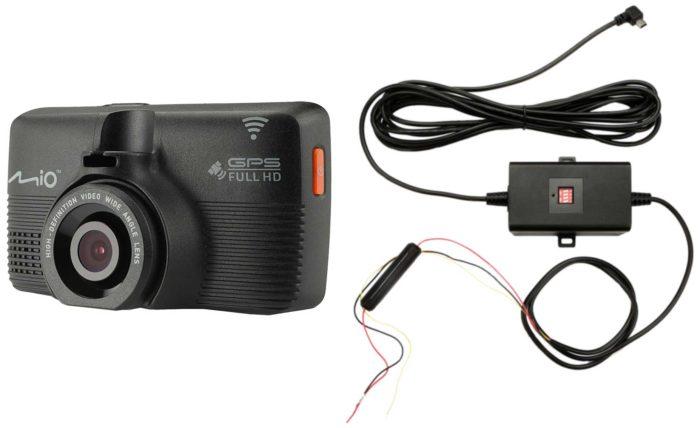
My MiVue 792. Viadorestrator test
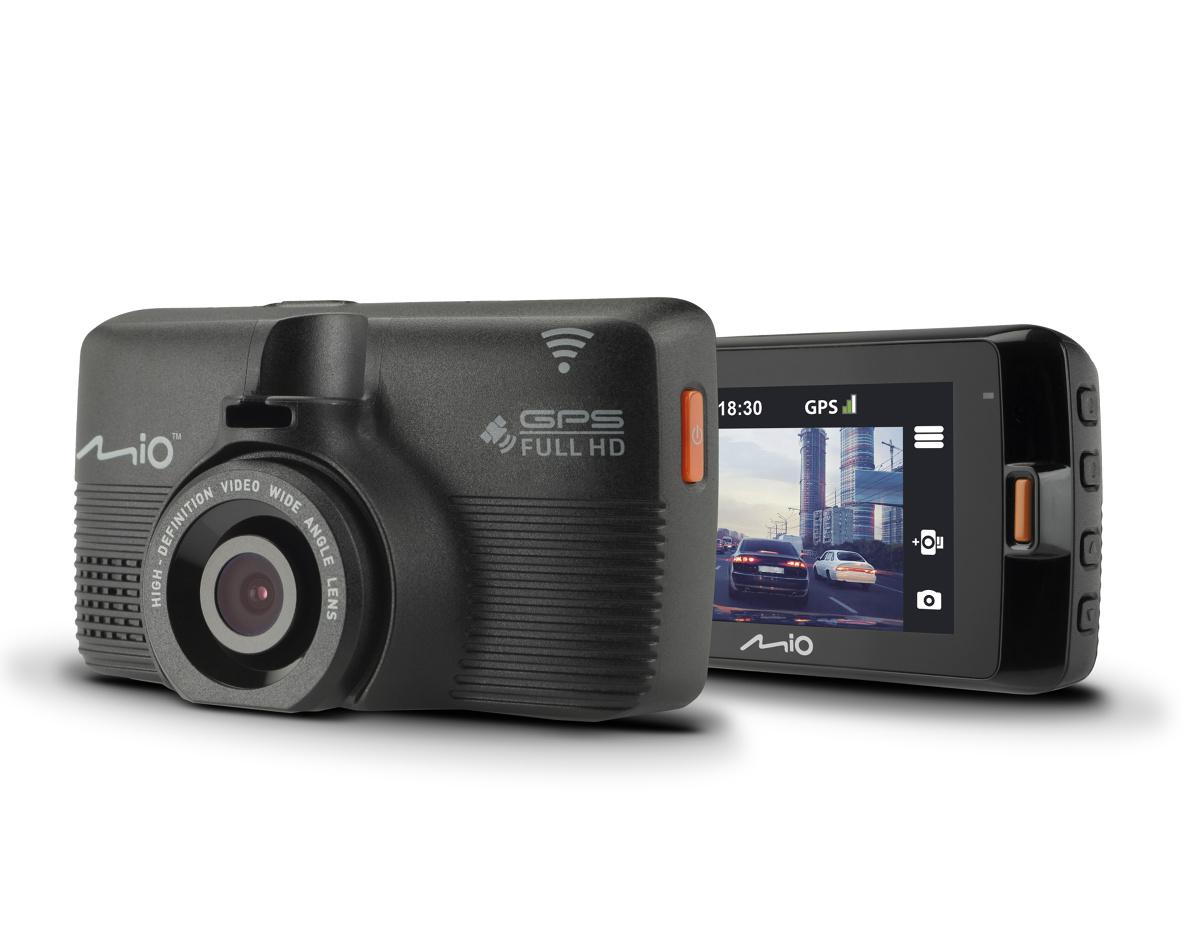 Car DVRs have become commonplace. And probably only the lack of clear legal norms in Europe means that they are still an additional equipment of the car, and not an integral part of it.
Car DVRs have become commonplace. And probably only the lack of clear legal norms in Europe means that they are still an additional equipment of the car, and not an integral part of it.
However, their role is sometimes invaluable. And it's not about capturing cute travel videos, but about documenting everything that happens on the road and what can become hard evidence in the event of a car crash or, even worse, an accident.
When testing video recorders, we increasingly evaluate their quality parameters. A good quality optical sensor with a clear glass lens system is the key to success and recording high-quality material rich in detail even in poor lighting conditions.
This is what the Mio Mivue 792 DVR looks like.
What is "on board"?
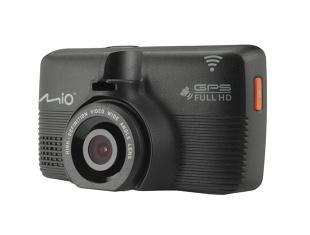 Mio Mivue 792 is equipped with Sony's highly sensitive Starvis optical sensor (IMX291). Due to its unique image quality parameters in low light conditions, it is widely used in professional video surveillance systems. Its use in this VCR was supposed to improve the quality of the recording, especially at night. This is also affected by a 6-layer glass lens with an aperture of 1.8 and a viewing angle of 140 degrees.
Mio Mivue 792 is equipped with Sony's highly sensitive Starvis optical sensor (IMX291). Due to its unique image quality parameters in low light conditions, it is widely used in professional video surveillance systems. Its use in this VCR was supposed to improve the quality of the recording, especially at night. This is also affected by a 6-layer glass lens with an aperture of 1.8 and a viewing angle of 140 degrees.
 The image is displayed on a 2,7-inch (about 7 cm) widescreen color LCD screen with a wide bezel. Its dimensions allow you to quickly and conveniently view the recorded material.
The image is displayed on a 2,7-inch (about 7 cm) widescreen color LCD screen with a wide bezel. Its dimensions allow you to quickly and conveniently view the recorded material.
The functions of the device are controlled, as in most Mio DVRs, using four micro buttons located on the right side wall. Working with them and editing the menu takes some practice, but after a while you should be able to navigate it fairly freely.
The camera body measures 90,2 × 48,8 × 37 mm (width x height x thickness) and weighs 112 grams.
Record
The camera starts recording as soon as it is connected to the car's network (12V). Recording itself is in Full HD 1920 x 1080p or Super HD 2304 x 1296 for the main camera and Full HD 1920 x 1080p for the secondary rear camera.
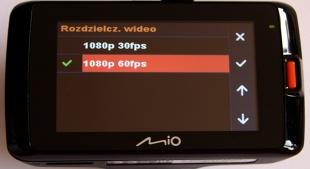 MiVue 792 WIFI Pro records a Full HD (1080p) image at 60 fps, which is a much more advantageous mode, for example, to perform the so-called freeze frame than 30 fps.
MiVue 792 WIFI Pro records a Full HD (1080p) image at 60 fps, which is a much more advantageous mode, for example, to perform the so-called freeze frame than 30 fps.
The registrar uses the H264 codec. Recordings are archived on a micro SD card with a capacity of 8 to 128 GB, class 10 (i.e. providing a minimum transfer rate of 10 MB/s).
The advantages include placing on the recorded video material such information as: the model of the registrar, the date and time of recording, data from the G-sensor (overload sensor), GPS coordinates relative to our location, as well as the current speed developed by the vehicle. . The latter information - sometimes highly sensitive - may or may not be recorded on the recorded material. We can set it up while programming the device.
MiVue 792 WIFI Pro also allows you to record what is happening both in front and behind the car thanks to the optional accessory - the rear camera A20. It has a bright F/2.0 aperture wide-angle glass lens and can record images in Full HD (1080p) quality. It is installed with a nine-meter cable, so assembly should not cause any problems even in large vehicles such as station wagons or vans. The cable connection ensures constant transmission, power supply and is resistant to failure or interference.
installation
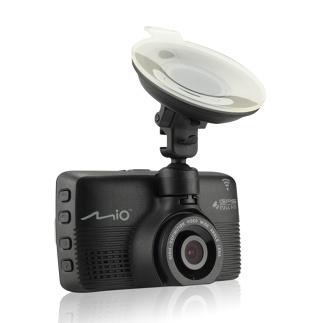 The camera is mounted on the windshield of the car with a suction cup holder.
The camera is mounted on the windshield of the car with a suction cup holder.
Depending on the needs and the angle of the glass or housing, the camera is adjusted with an adjustable hinge. The main power cable is about 3 meters long, which allows for a relatively free and discreet installation of the entire unit inside the vehicle.
Features
The DVR is equipped with all the typical features that can be found "on board" this type of device. In addition, thanks to the GPS module, its functionality has been expanded to include a database of speed cameras, speed limit warnings, or the ability to place vehicle location data on the record.
What sets it apart from many other dash cams is the very advanced ADAS (Advanced Driver Assistance System), which includes: LDWS (Line Departure Warning System) and FCWS (Front Collision Warning System) collision avoidance system. This system is present in other Mio DVRs from the "top shelf" and is consistently developed. Premium cars are equipped with technically similar solutions. These systems work on the Mio dashcam when the vehicle speed is over 60 km/h.
LDWS is a lane departure warning system. We can choose two different warning methods, among others an audible warning or an English voice prompt.
See also: Opel's first hybrid car
FCWS, on the other hand, is a system that warns us of the possibility of a collision with a vehicle in front. For the system to work correctly, we need to calibrate the front camera in relation to the horizon and the hood of the car.
Thanks to the built-in WiFi module, the Mio MiVue 792 WIFI Pro DVR can be quickly paired with a mobile phone or tablet, thus gaining access to useful functions. With the help of the application, you can create a backup copy of the selected recording, play it or send it to a computer or send it to a social network, i.e. Facebook or YouTube.
 An important feature is also the ability to integrate the Mio MiVue 792 DVR with TPMS (Tire Pressure Monitoring System) sensors, which are increasingly installed in modern cars. Thanks to this, the sensors send information about the pressure in the tires of the car, and the recorder issues an alarm when it is incorrect.
An important feature is also the ability to integrate the Mio MiVue 792 DVR with TPMS (Tire Pressure Monitoring System) sensors, which are increasingly installed in modern cars. Thanks to this, the sensors send information about the pressure in the tires of the car, and the recorder issues an alarm when it is incorrect.
On practice
The camera starts recording automatically when connected to the vehicle's network. The image is written in a loop, so it depends only on the capacity of the card how long the gap between the old material and the overwriting of the new material will take.
The bright front camera lens delivers crisp, clear images—importantly—even in the dark.
The optional rear camera (A20) is darker and this affects the recorded material, but the quality of the recorded image remains high.
The database of speed cameras (including foreign ones) should be evaluated, although in the latter case we must update it before departure. The built-in GPS module is very useful, especially if we want to analyze the route of our trip, compare the video with places on the map, etc. The driving and driver assistance systems are interesting - they warn of vehicles moving in front or change lanes.
MiVue Manager is a very useful and functional additional software that can be downloaded from the manufacturer's website. It is a versatile tool thanks to which we can view the recorded material as well as obtain information about the overloads registered by the G sensor. The files can also be conveniently archived, managed and uploaded directly to Facebook or YouTube.
advantages:
– high quality of the saved image;
– built-in GPS module;
- well-maintained housing.
Disadvantages:
- relatively high price;
Price: approx. 799 PLN
Read also: Testing Volkswagen Polo
